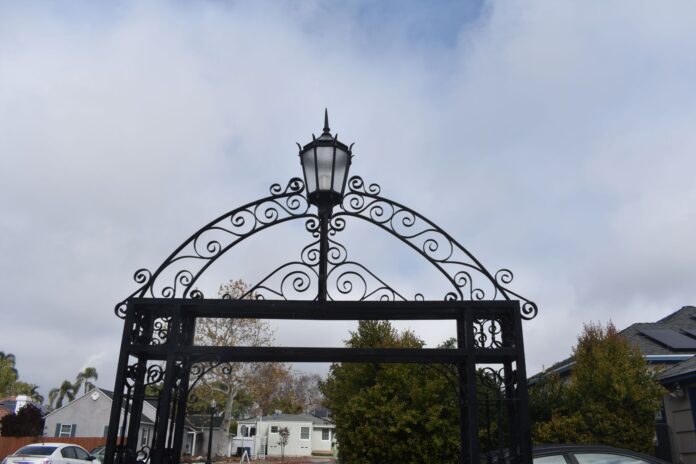
By Macy Meinhardt, Voice & Viewpoint
Marked in a dicey 6-2 vote by the Historical Preservation Board, Talmadge Park estates is slated to become a nationally recognized historic district—a move critics say will stifle further development of equitable fair housing policies in the Mid-City neighborhood of San Diego.
Amid a severe regional housing shortage—Residents of Talmadge Park Estates countered with inclusive housing advocates gathered before the San Diego Historic Resources board on January 25 to debate whether or not the heritage of Talmage should surpass the need for more equitable and fair housing.
“This application for historical designation is clearly an attempt to make the 411 million-dollar home in Talmadge Park Estates immune from any change in zoning and housing policy,” written in an article signed by various fair housing advocates.
What Makes Talmadge “Historical”?
The history of Talmadge goes back to the Great Depression. Built to be a “working and middle class” neighborhood, the community primarily housed workers in the aircraft industry around 1935. Since then, the neighborhood has managed to curb multiple waves of infill development, making Talmadge Park Estates’ wrought iron gates, acorn street lights, and colonial style architecture all the more “rare” in today’s age.
“There’s not many places like this left in San Diego. It’s a way of preserving a chunk of history,” said President of the Talmadge Historical Society Laura Henson.
Today, Talmadge Park Estates is primarily composed of single-family homes and is located in the Mid-City neighborhoods of San Diego, approximately seven miles northeast of downtown San Diego. The average going rate for homes is approximately 1.1 million dollars.
Regardless of if the homes were primarily built to be affordable or not, one thing that is certain is that they were not built to include the African-American race.
Fair housing advocates argue that the history of Talmadge was founded on a basis of deliberately marked racism—with language written into covenants explicitly barring anyone outside the Caucasian race of home attainment in the neighborhood. This process is known as redlining, and despite being outlawed in 1968 through the Fair Housing Act, the impact still persists today.
“That is the history that this neighborhood represents and that is the history they wish to preserve, ” said Housing Project Director Nicole Lillie with Our Time to Act United.
With that, not only will historical designation condone the racial undertones woven into the community, but it will suppress attempts to affirmably further fair housing in the area, opponents claim.
Moreover, upon recent review by the City of San Diego’s Assessment of Fair Housing, it finds Talmadge as one of three “racially concentrated areas of affluence” in the city, with a notable separation in race and income just south of the historic gates.
The goal of Affirmatively Furthering Fair Housing (AFFH) is to combat housing discrimination, eliminate racial bias, and undo historic patterns of segregation, according to the CA Dept. of Housing and Development.
In this case, restricting housing development criteria in neighborhoods such as Talmadge only exacerbates the housing shortage problem.
According to the YIMBY Democrats of San Diego: “ Historical Designation will block development of much needed affordable housing projects such as ADU’s, lot splits, and deployment of ‘missing middle’ housing, thus further exacerbating the housing shortages, impacting marginalized groups disproportionately.”
Why is this important?
According to a study on housing instability patterns, while African Americans only represent only about 5% of the population in San Diego, they represent 20% of households in the region affected by the housing shortage and housing instability.
Furthermore, an Axios analysis on home development concluded that San Diego is short of 90,000 homes. This is due to home development in the last decade failing to keep up with population growth.
However, Henson, says the request for nomination is “reasonable” and that development can be done in historic neighborhoods.
“you can build ADU’S, you can build mini-dorms, second stories, they just have to fit the historic character of the neighborhood, which is a reasonable request, but they have to be compatible with the neighborhood” says Henson.
In addition, residents of Talmadge who are advocates for the nomination say that Talmadge has already fulfilled the 10% mandate of its housing stock being affordable.
Furthermore, individuals prompting for the designation are also hoping for an opportunity to increase their property values and decrease their property taxes through benefits allocated by the Mills Act, as stated in their “Benefits to Becoming a Historic District” slideshow.
“If the community wants to preserve their neighborhood they can build a plaque, they can keep their home the same but they should not be given right to effectively lower their property taxes and or be immune from any reform laws passed by the city or state of CA going forward….THAT is the issue we have here today,” said Ricardo Flores, Executive Director of Local Initiatives Support Corporation.
Yet, despite ample community concern, Kelly Stanco, the Department. Director of City Planning asserts that although the motion carried, “the designation of properties and districts [ by the City of San Diego] that held such covenants does not condone or in any way legitimize these deplorable practices, nor does it preclude new homes from being constructed in a historical district.”


